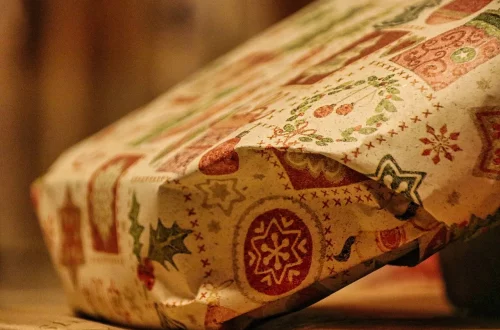
Why Does My Hair Feel Waxy and How to Fix It?
When you run your fingers through your hair, you expect to feel smooth, soft strands. However, if your hair has started to feel waxy, sticky, or greasy, it can be quite disconcerting. This unusual texture can result from various factors, including product buildup, the natural oils produced by your scalp, or even environmental influences. Understanding why your hair feels this way is crucial for restoring its natural luster and health.
Many people experience this issue at some point in their lives, and while it can be frustrating, it’s often a sign that your hair care routine needs a little adjustment. The good news is that there are effective ways to address this problem, ensuring your hair returns to its beautiful, manageable state. Whether you’re dealing with heavy styling products, hard water, or an imbalance in your scalp’s oil production, identifying the root cause will help in finding the right solutions.
Let’s delve deeper into the reasons behind this unwelcome hair texture and explore practical solutions to bring back your hair’s vitality.
Understanding Product Buildup
One of the most common reasons hair feels waxy is product buildup. Many hair care products, such as shampoos, conditioners, gels, and sprays, contain various chemicals and silicones that can accumulate over time. When these products aren’t fully washed out, they leave a residue that can weigh your hair down, leading to that waxy feeling.
To combat product buildup, it’s essential to change your hair care routine. Start by using a clarifying shampoo once every two weeks. Clarifying shampoos are formulated to remove residue and buildup from styling products and hard water minerals. They work by deeply cleansing the hair and scalp, allowing your hair to breathe and regain its natural texture. However, keep in mind that overuse can strip your hair of its natural oils, so moderation is key.
In addition to using a clarifying shampoo, consider the types of products you’re using daily. Opt for lighter, water-based products instead of heavy creams or oils. This change can significantly reduce the chance of buildup, especially if you style your hair frequently. Also, be sure to rinse your hair thoroughly to ensure no product is left behind after washing.
Finally, it may be beneficial to integrate a detoxifying treatment into your hair care routine. There are various DIY treatments, such as apple cider vinegar rinses, which can help break down product buildup. Mix one part apple cider vinegar with three parts water, apply it to your hair after washing, let it sit for a few minutes, and then rinse thoroughly. This method can restore shine and softness to your hair.
Environmental Factors and Hard Water
Environmental factors, particularly hard water, can have a significant impact on how your hair feels. Hard water contains high levels of minerals like calcium and magnesium, which can lead to buildup on your hair. This buildup can create that waxy texture, making your hair feel heavy and lifeless.
If you suspect hard water is the culprit, consider investing in a water softener for your home. This device can effectively remove minerals from your water supply, leading to softer water that is gentler on your hair. Alternatively, you can use a chelating shampoo designed specifically to remove hard water deposits from your hair.
In addition to hard water, other environmental factors such as humidity and pollution can also contribute to hair texture issues. Humidity can cause the hair cuticle to swell, making your hair feel frizzy and sticky. To combat this, use a leave-in conditioner or an anti-frizz serum that can help seal the cuticle and protect your hair from environmental stressors.
Moreover, consider wearing a hat or using a protective hairstyle when spending time outdoors, especially in polluted environments. Protecting your hair from the elements can prevent it from becoming weighed down or waxy, keeping it looking fresh and healthy.
Scalp Health and Oil Production
Your scalp plays a critical role in the overall health of your hair. An imbalance in oil production can lead to various issues, including a waxy feeling. If your scalp is overly oily, it can transfer excess sebum to your hair, resulting in a greasy appearance and texture. Conversely, if your scalp is too dry, it may lead to flakiness and irritation, which can also affect how your hair feels.
To maintain a healthy scalp, it’s essential to establish a balanced washing routine. For those with oily scalps, washing your hair more frequently can help manage oil production. However, be cautious not to over-wash, as this can strip essential oils and lead to a cycle of dryness and excess oil production.
Incorporating a gentle exfoliating scalp treatment can also be beneficial. These treatments can help remove dead skin cells and excess oil, promoting a healthier scalp environment. Look for products containing natural exfoliants or consider DIY options, such as a sugar scrub, to gently exfoliate your scalp.
Furthermore, consider using a lightweight moisturizer specifically designed for your scalp. These products can help balance oil production and hydrate your scalp without weighing your hair down. Ingredients like tea tree oil, aloe vera, and peppermint can provide soothing effects and promote a healthy scalp.
Choosing the Right Hair Care Products
Selecting the right hair care products is crucial in preventing and resolving a waxy hair texture. Many conventional shampoos and conditioners contain sulfates and silicones, which can contribute to buildup. Instead, look for sulfate-free products that are gentle on your hair and scalp. These products can cleanse without stripping your hair of its natural oils.
When it comes to styling products, consider your hair type and texture. For instance, if you have fine hair, opt for lightweight mousses or sprays instead of heavy creams or gels. These lighter products will provide hold without weighing your hair down. Conversely, if you have thick or curly hair, you may benefit from richer creams or oils, but be sure to use them sparingly to avoid buildup.
Additionally, reading labels and understanding ingredients is essential. Avoid products with high levels of alcohol, as they can dry out your hair and scalp, prompting an overproduction of oil. Instead, seek out nourishing ingredients like argan oil, shea butter, and natural extracts that promote hydration and health.
Lastly, don’t hesitate to experiment with different brands and formulations to find what works best for your hair. Every hair type is unique, and finding the right balance of products can make a significant difference in achieving healthy, vibrant hair.
In conclusion, a waxy hair texture can stem from various factors, including product buildup, environmental influences, and scalp health. By understanding these causes and implementing the right solutions, you can restore your hair’s natural beauty and feel. Remember that consistency is key, and don’t be afraid to adjust your routine as needed.
**Disclaimer:** This article is not intended as medical advice. For health-related issues, please consult a healthcare professional.




